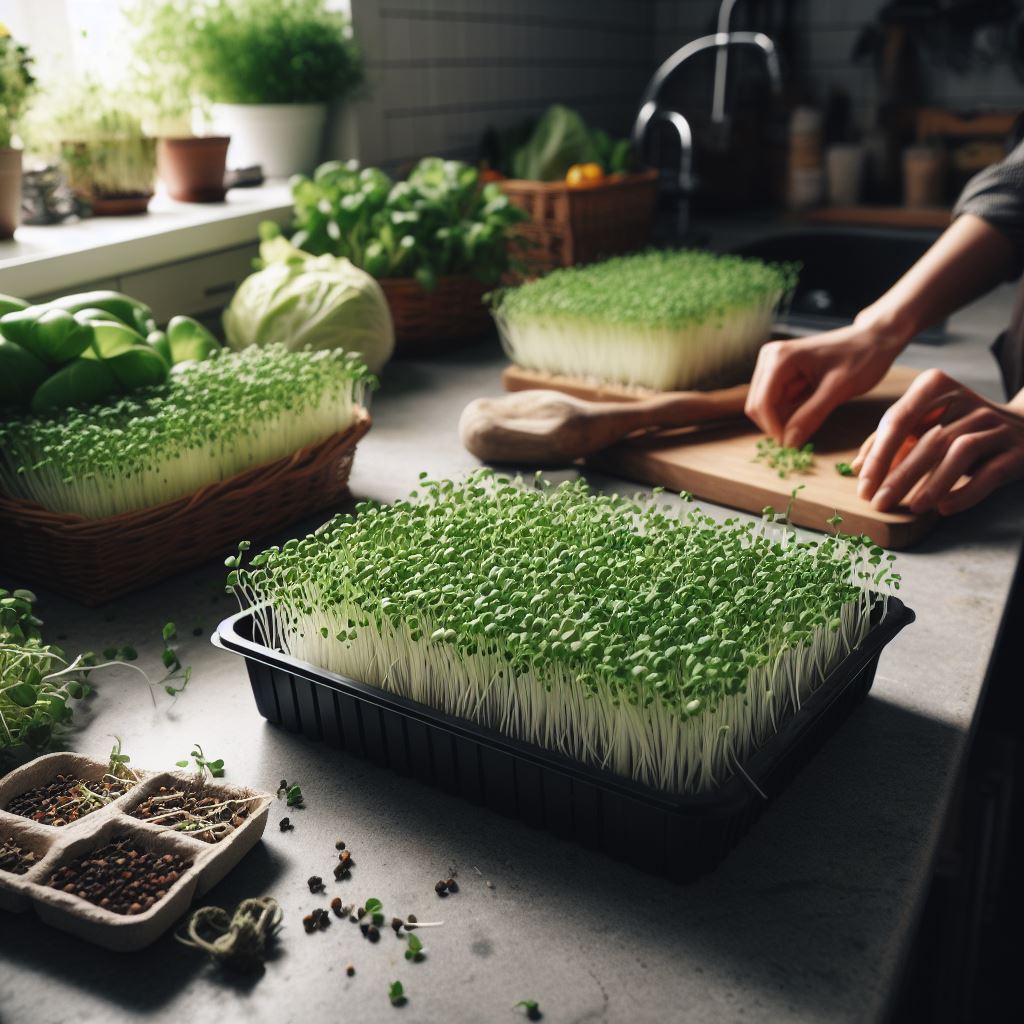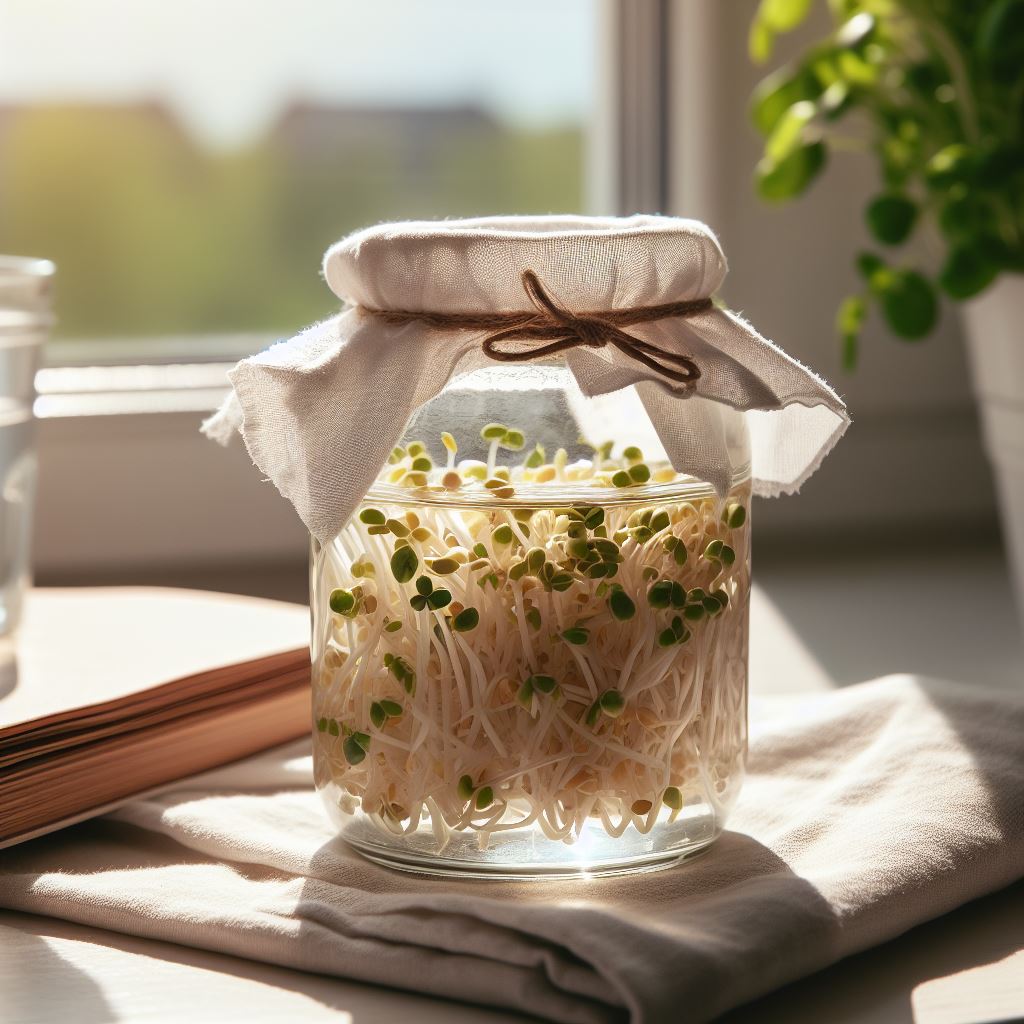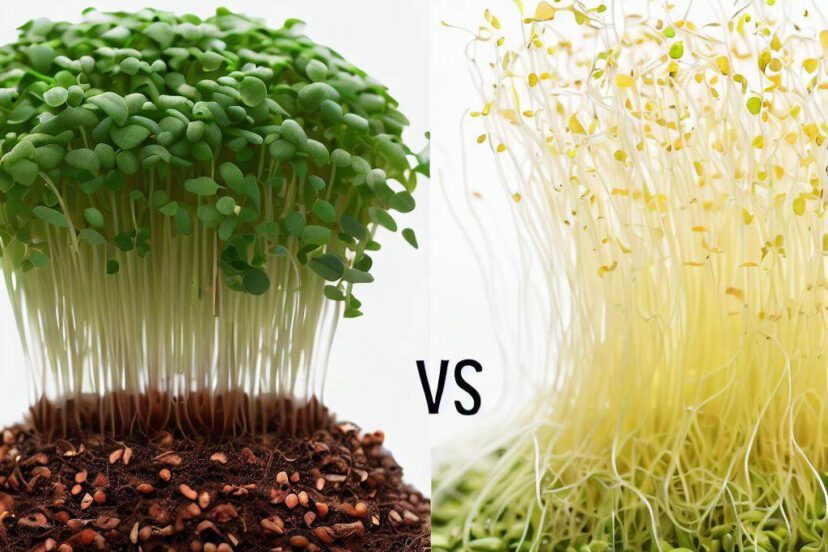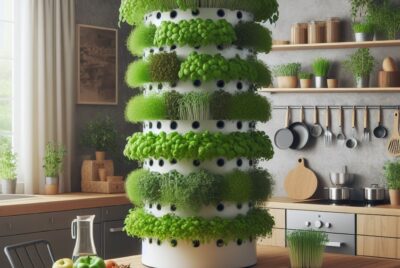Sprouts vs Microgreens: Decoding the Nutritional Battle
As an ardent enthusiast in the captivating world of microgreens, I am thrilled to share valuable insights into the intriguing debate surrounding sprouts vs microgreens. These tiny greens have garnered tremendous popularity among health-conscious individuals due to their remarkable nutritional profiles. Join me as we embark on a journey through the realms of sprouts and microgreens, exploring their diverse flavors, distinct growing processes, culinary versatility, safety considerations, environmental impact, and more. By the end of this article, you will be well-equipped to make informed decisions about incorporating these nutrient-rich powerhouses into your dietary routine.
Introduction
Sprouts and microgreens are miniature greens harvested at different stages of growth. Sprouts are seeds that have just germinated and are consumed when they are only a few days old, while microgreens are harvested slightly later when the first true leaves have fully developed. These vibrant greens offer a concentrated burst of nutrients, delightful flavors, and a wide array of culinary possibilities. Let us delve deeper into the fascinating world of sprouts and microgreens to explore their unique attributes.
Nutritional Powerhouses: Microgreens Taking the Lead
In the world of sprouts vs microgreens, the debate intensifies as we unravel the superior contender in terms of nutrition, flavors, and culinary versatility. Microgreens, those tiny greens bursting with vibrant colors and intense flavors, steal the spotlight when it comes to nutritional value. These miniature greens have gained popularity among health-conscious individuals due to their exceptional nutrient density. In fact, studies have revealed that microgreens can contain up to 40 times more nutrients than their mature counterparts. Packed with essential vitamins, minerals, and antioxidants, microgreens offer a potent dose of nourishment in every bite.

Microgreens owe their nutritional prowess to their unique growth stage. Harvested at the cotyledon stage, when the first true leaves have fully developed, microgreens have reached their peak in terms of nutrient concentration. These young plants have already absorbed and synthesized an abundance of nutrients from the seed, making them a nutrient powerhouse. Whether it’s the peppery taste of radish microgreens, the earthy flavor of beet microgreens, or the delicate sweetness of sunflower microgreens, these vibrant greens not only add a burst of flavor to your dishes but also provide a wealth of essential nutrients.
Sprouts: A Health-Boosting Option
While microgreens may steal the show in terms of nutrient density, sprouts still offer their own set of health benefits. Sprouts are germinated seeds that have just started to grow roots, shoots, and leaves. During the sprouting process, enzymes are activated, leading to increased nutrient availability and improved digestibility. Sprouts are particularly rich in enzymes that aid in digestion, making them a valuable addition to a well-balanced diet.
Sprouts also pack a nutritional punch, offering an array of vitamins, minerals, and fiber. For example, alfalfa sprouts are an excellent source of vitamin K and C, while mung bean sprouts provide a good amount of folate and iron. Sprouts are low in calories but high in nutrients, making them an ideal choice for those looking to boost their nutrient intake without adding excessive calories to their meals.

Furthermore, sprouts are known for their alkalizing properties, which can help balance the body’s pH levels. A diet rich in sprouts may contribute to improved digestion, increased energy levels, and enhanced overall well-being. From a culinary perspective, sprouts add a delightful crunch and subtle nutty flavor to various dishes, making them a versatile ingredient in salads, sandwiches, stir-fries, and more.
Growing Process of Sprouts vs Microgreens
The growing process sets sprouts and microgreens apart. Sprouts are typically grown by soaking seeds in water until they germinate. This process is relatively quick, usually taking only a few days. However, it requires diligent rinsing and proper drainage to prevent the growth of harmful bacteria.
On the other hand, microgreens are grown in soil or a growing medium. Seeds are sown densely, and the greens are allowed to grow until the first true leaves emerge. The growing period for microgreens ranges from 1 to 3 weeks, depending on the variety. Cultivating microgreens necessitates careful attention to watering, light exposure, and temperature to ensure optimal growth and vibrant flavors.
Check out the in-depth beginner’s guide on the best Microgreen Grow Kits to start your journey cultivating microgreens from home.
Flavor and Texture
One of the most enchanting aspects of microgreens is their diverse flavors and unique textures. These miniature greens come in an extensive range of varieties, such as broccoli, radish, pea shoots, and sunflower microgreens. Each variety boasts its own distinct taste profile, ranging from mild and delicate to tangy and robust. Microgreens introduce a delightful explosion of flavors to any dish, captivating your taste buds and elevating your culinary creations.
Conversely, sprouts exhibit a milder flavor profile and tend to have a more uniform texture. They are often crisp with a subtle nutty taste. Popular sprout varieties include alfalfa, mung bean, and lentil sprouts. The simplicity of their flavor makes them versatile additions to salads, sandwiches, wraps, and other culinary masterpieces.
Culinary Versatility
Microgreens have gained acclaim among both professional chefs and home cooks for their extraordinary culinary versatility. These delicate greens can serve as exquisite garnishes, adding visual appeal to dishes. Additionally, they can be incorporated into salads, sandwiches, wraps, stir-fries, and even blended into smoothies, providing an exceptional burst of freshness and a nutrient-packed punch. The vibrant colors and complex flavors of microgreens enliven and enhance a myriad of culinary creations.
Sprouts, with their mild flavor and satisfying crunch, also lend themselves well to various culinary applications. They can be added to sandwiches, wraps, stir-fries, and soups, elevating the texture and taste of the dish. Sprouts contribute a crisp and refreshing element, offering a delightful contrast to other ingredients.
Shelf Life and Storage
Safety considerations are paramount when discussing sprouts vs microgreens. When it comes to shelf life, microgreens tend to outlast sprouts. Properly stored in the refrigerator, microgreens can maintain their freshness for up to a week. To maximize their shelf life, it is advisable to store them in airtight containers or by lightly covering them with a damp paper towel to retain their moisture.
In contrast, sprouts have a shorter shelf life due to their higher water content. They are best consumed within a few days of sprouting. To prolong their freshness, sprouts should be refrigerated and rinsed regularly.
Safety Considerations
Now, let’s shift our focus to the environmental impact of sprouts vs microgreens. Microgreens shine in sustainability, thriving in small spaces through organic farming methods or hydroponics. By reducing resource consumption and waste, microgreens emerge as an eco-friendly choice. Sprouts, though suitable for home cultivation with minimal space requirements, face concerns regarding food safety and bacterial growth in commercial production. It is crucial to purchase sprouts from reliable sources and practice proper hygiene when handling and preparing them.
Microgreens, on the other hand, have a lower risk of contamination as they are grown in soil or controlled environments. However, it is still important to handle them with clean hands and rinse them thoroughly before consumption..
Environmental Impact of Sprouts vs Microgreens
In terms of sustainability, microgreens offer a compelling advantage. These greens can be cultivated in small spaces and are often grown using sustainable practices, such as organic farming and hydroponics. Microgreens require fewer resources and produce less waste compared to traditional farming methods, making them an environmentally friendly choice.
Sprouts, although they can be grown at home with minimal space requirements, have faced concerns regarding food safety and the potential for bacterial growth. Commercial sprout production necessitates rigorous monitoring to ensure safety standards are met.
Cost and Accessibility
Cost and accessibility come into play in the sprouts vs microgreens debate. Microgreens may be slightly more expensive than sprouts due to the longer growing time and the resources required for cultivation. However, their availability has significantly increased in recent years. Many local farmers’ markets, grocery stores, and specialty food shops now offer a wide variety of microgreens. With some guidance and effort, you can also cultivate your own microgreens at home, providing a cost-effective and readily accessible option.
Sprouts, on the other hand, are often more widely available and tend to be more affordable. They can be found in most supermarkets, health food stores, and can easily be grown at home using sprouting kits or jars.
Conclusion
In the captivating debate of sprouts vs microgreens, both greens offer unique characteristics and a myriad of health benefits. Microgreens showcase an impressive nutritional profile, remarkable flavors, and versatility in culinary applications. Their vibrant colors and concentrated nutrients make them a valuable addition to a well-rounded diet.
Sprouts, with their mild taste and satisfying crunch, provide a convenient and accessible option for adding a wholesome crunch to various dishes. They offer a range of vitamins, minerals, and fiber, contributing to overall health and vitality.
Ultimately, the choice between sprouts and microgreens depends on your personal preferences, nutritional needs, and culinary aspirations. Embrace the culinary adventure, experiment with flavors, and explore the wonders of sprouts and microgreens in your quest for a healthier and more vibrant lifestyle.
FAQs
1. Can I grow microgreens without using soil?
Yes, you can grow microgreens without soil. Hydroponics and other soil-free growing methods are gaining popularity among microgreen enthusiasts. These methods involve growing microgreens using a water-based nutrient solution or other alternative growing mediums. Hydroponic systems provide precise control over nutrient delivery and minimize the risk of soil-borne pests or diseases. They offer an efficient and clean way to cultivate microgreens, making them an excellent option for indoor gardening or limited space.
2. Can I mix sprouts and microgreens in my dishes?
Certainly! Combining sprouts and microgreens can add a delightful combination of textures and flavors to your dishes. The crispness of sprouts and the tender leaves of microgreens create a harmonious balance. Try adding a handful of sprouts and microgreens to salads, wraps, or sandwiches for a vibrant and nutritious twist. The combination will elevate the visual appeal and provide a delightful sensory experience.
3. Are there any specific microgreens or sprouts recommended for specific health conditions?
While microgreens and sprouts offer valuable nutrition, it’s important to note that individual health conditions may require specific dietary considerations. For example, individuals with a vitamin K deficiency might benefit from consuming microgreens like kale or broccoli, which are high in vitamin K. Similarly, sprouts like mung bean sprouts are known for their potential health benefits in supporting digestion. However, it is always advisable to consult with a healthcare professional or a registered dietitian to determine the best dietary choices based on individual needs.
4. Can I freeze sprouts or microgreens for later use?
It is generally not recommended to freeze sprouts or microgreens, as freezing can affect their texture and flavor. These greens are best enjoyed fresh to fully appreciate their vibrant qualities. However, if you have an abundance of microgreens or sprouts and wish to preserve them, consider dehydrating them at a low temperature to retain their nutritional value and extend their shelf life. Dehydrated microgreens or sprouts can be used as flavorful toppings or added to dishes for a concentrated burst of nutrients.
5. Can I use sprouts or microgreens as a replacement for leafy greens?
Sprouts and microgreens offer an excellent complement to leafy greens but may not entirely replace them. While sprouts and microgreens provide concentrated nutrition, leafy greens like spinach, kale, and lettuce offer their own set of health benefits, including high fiber content and specific nutrients. It’s advisable to include a variety of greens in your diet to enjoy a broad range of nutrients and maximize the health benefits they provide.
Remember, both sprouts and microgreens have unique qualities that can enhance your culinary journey and contribute to your overall well-being. Whether you choose to indulge in the vibrant flavors and textures of microgreens or enjoy the crispness of sprouts, incorporating these tiny greens into your meals will undoubtedly elevate your dining experience and nourish your body with valuable nutrients. So, embark on this delightful adventure, explore the world of sprouts and microgreens, and savor the remarkable benefits they offer.




